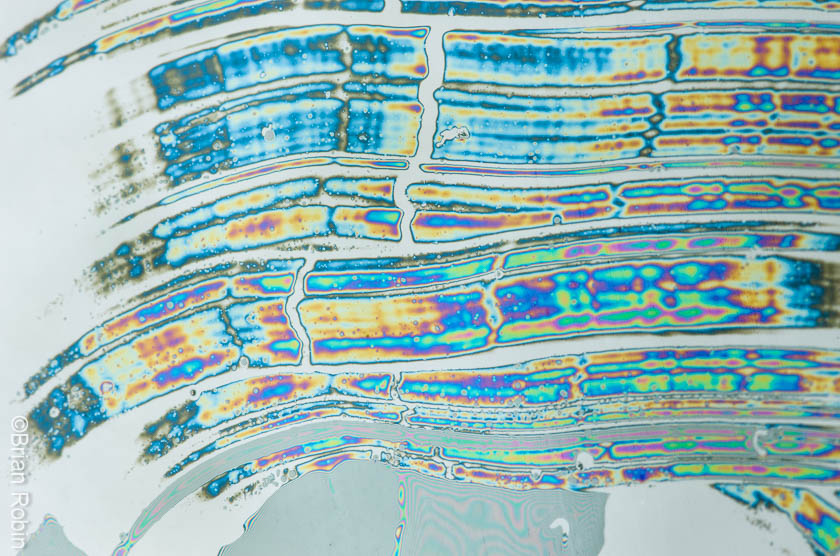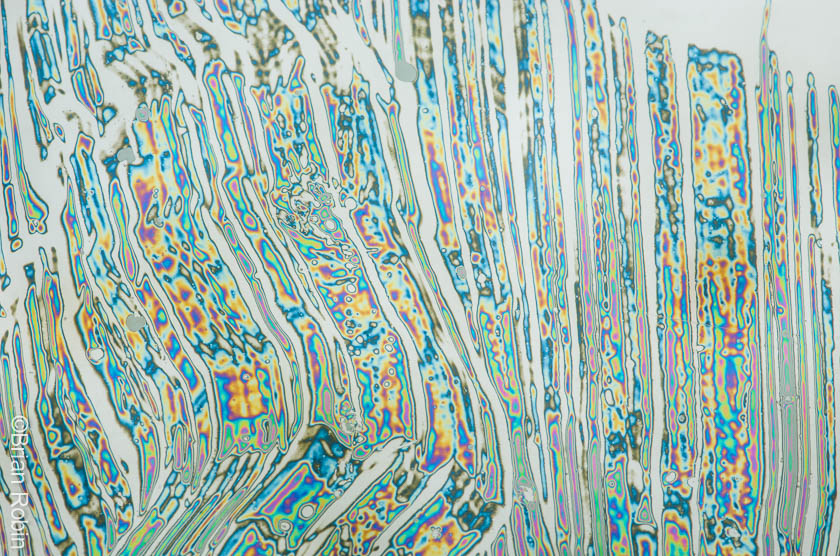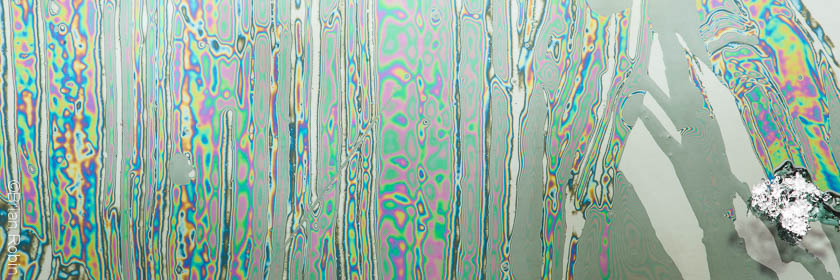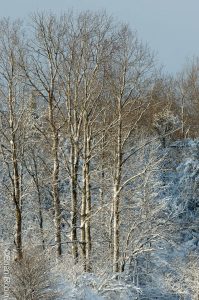
A fresh layer of snow overnight creates a magical winter wonderland to wake up to. It creates a fresh powder to record frisky animal tracks. It creates a crisp and refreshing chill in the air.
It also creates work.
Snowfall means shoveling the walks, steps, and sometimes the roof. It means blowing the laneway. It means cleaning off the car before you drive down said laneway in search of picturesque snow covered scenes.
Grumble. Grumble. Grumble.
Here’s how you can add a little bit of joy when working the snow brush over your car’s windshield for the thousandth time this winter. As you brush off your car, little bits of snow inevitably get left on the glass. If the conditions are right, usually a bit of heat from the sun or a running car, these bits of snow will start slowly sliding down the windshield.
When it does, look closely.
Thin Film Interference, aka that which makes soap bubbles pretty.
As the snow slides, it sometimes leave behind a very thin film of water. There is an optical effect called “thin film interference,” which in short means light waves bounce off the top and bottom surfaces of our thin film and under the right conditions make friends on the way back to our eyes, resulting in pretty colours. We won’t worry about the physics behind this, but it is the same phenomenon responsible for the colours you’ll see in soap bubbles or oil slicks. It’s these pretty colours we’re after.
It takes a thin film for this to work, if the windshield is too warm and melting the snow too fast, you’ll just get colourless wet. If the snow is tumbling and not sliding, you just get a mini colourless avalanche (fun in its own right).
When the conditions are just right, you can get enough colour to liven up any white winter day:
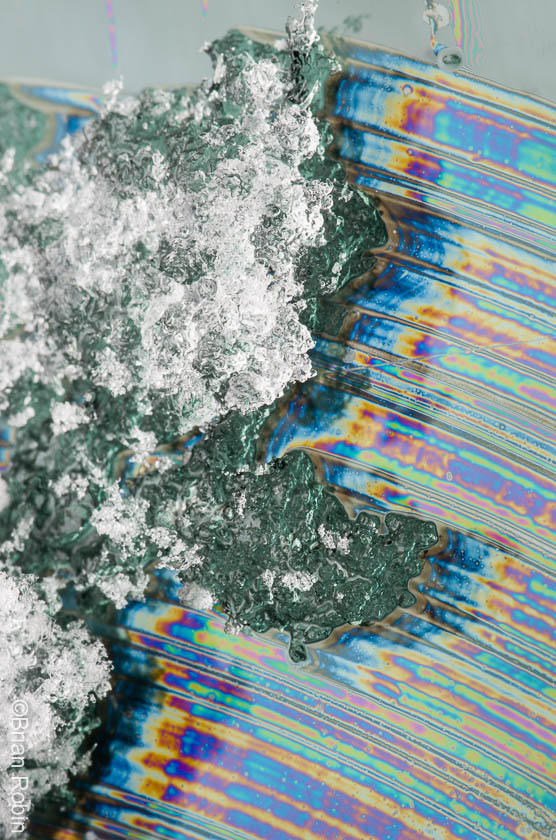
The colour variations we see depend on the thickness of the film. In the next photo, the brighter, more vibrant colours down the centre are the thinnest layers. The slightly pukey and faded greens and pinks on the sides are thicker layers:
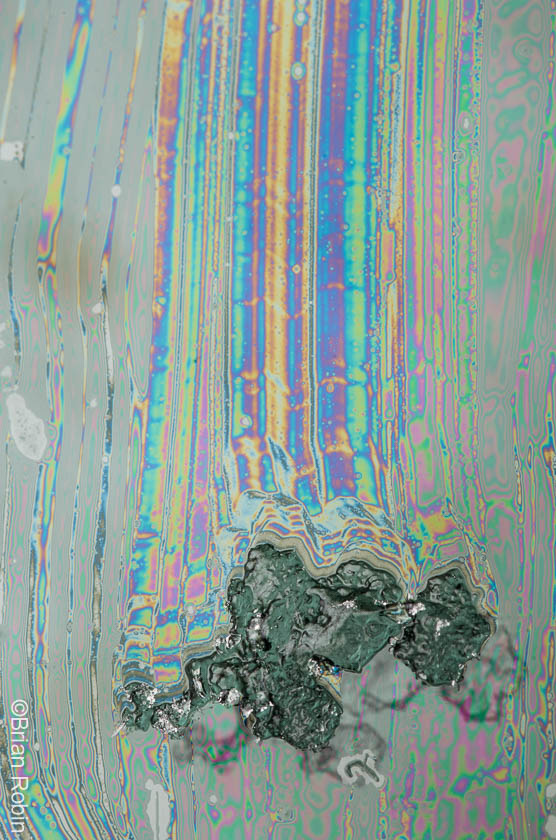
These colours don’t last long. The water quickly coalesces into thicker films, droplets, or outright evaporates (especially if it’s windy). The patterns are constantly shifting, so look quickly … and look closely! All the photos here are tiny sections, mostly 24mm or so on the long side.
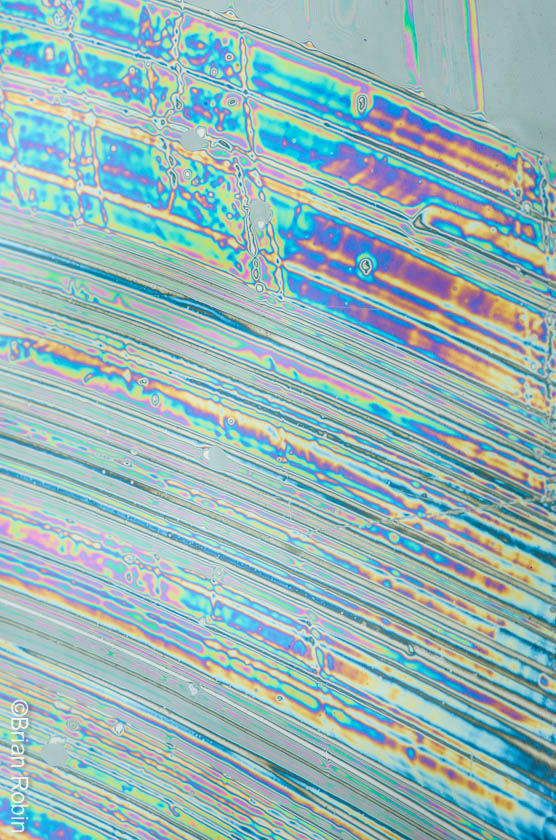
A few tips for fellow photographers
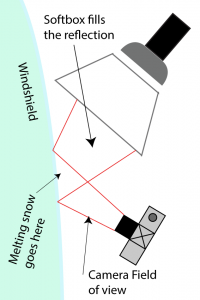
A key with these photos – we’re looking at directly reflected light. Think of it like photographing a mirror and trying to have a uniform light source entirely fill the reflection. To do this, we need our camera at a slight angle to the glass and a biggish light source to the side, this will give the interesting colours when exploiting thin film interference (back lighting is doomed to failure!).
I use a miniature homemade soft box a few centimetres away from the glass, just to the side of my lens, but the lighting from an overcast day will be serviceable in a pinch (hooray for cloudy winter days?). The diagram exaggerates the angles, in practice you’re also fighting to have the camera as perpendicular to the glass as possible to help keep the surface of the glass in focus.
Make your own funky ephemeral patterns
There’s no reason to make gravity do all the work either, I’ve spent more time than I care to admit sliding chunks of snow around on pieces of glass. Some experimentation will be required, but with the right snow and speed you can get the pretty. Think of it as a different kind of ‘snow brush’, one that lets you make your own funky ephemeral patterns.
Warning! This can make the 5 minute job of brushing off the car turn into a 50 minute job, but way more fun.
Second Warning! Beware the ramifications of letting the neighbours see you staring intently at the windshield while giggling gleefully! Macro photographers in the crowd should be used to this stigma.
Have fun!
